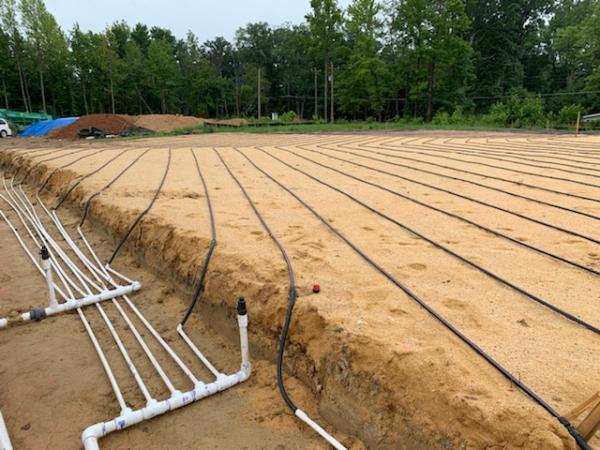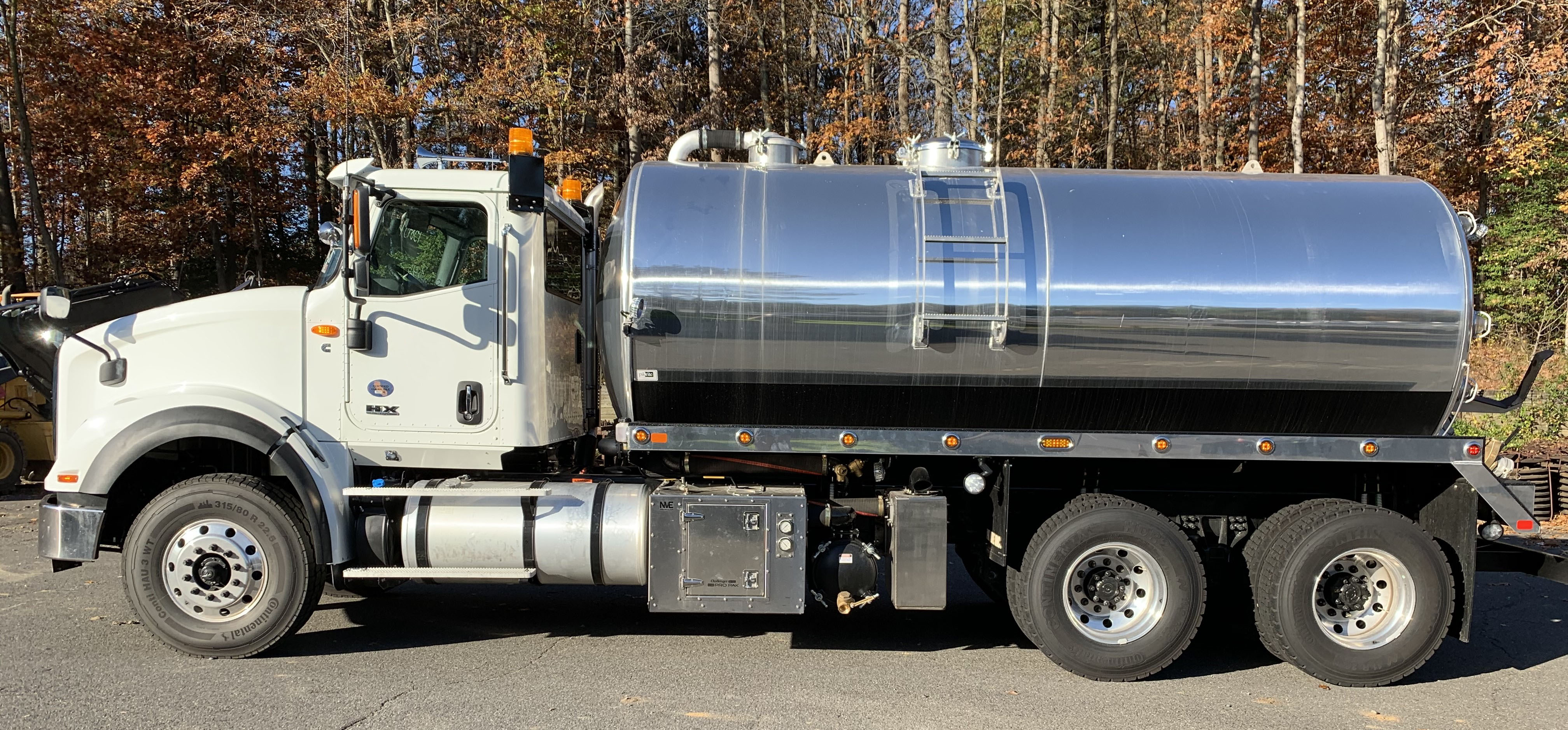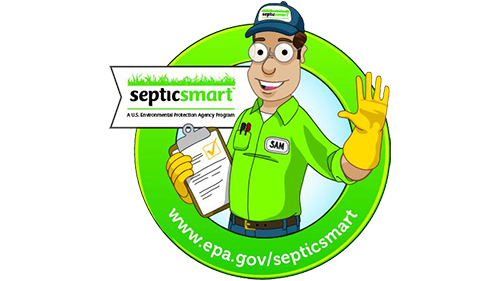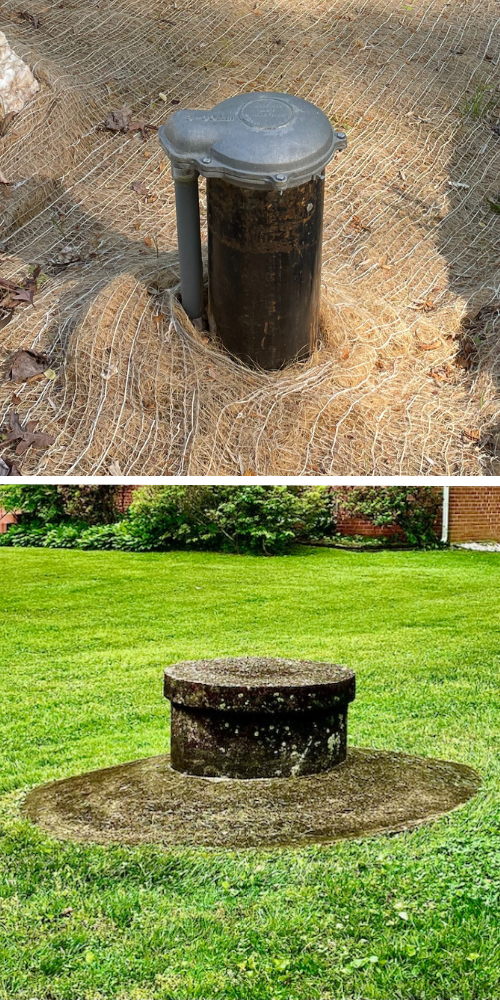Health Department Alert:

Use the Planning and Land Use System (PLUS) to apply for permits, track the status of your application, update information, upload documents, pay fees, and search property information.
If you have any questions, please call us at 703-246-2201.
Training materials and videos are available to help you get started.

Onsite sewage systems, commonly referred to as septic systems, are a safe and effective means of wastewater disposal when properly designed, installed and maintained.
However, system failures can and do occur. Failures can be caused by bad system design, improper maintenance, or simply because the system has reached the end of its life expectancy.
If not functioning properly, a septic system can pose significant health risks to people, pets, and the environment by discharging untreated sewage onto neighboring yards or nearby creeks or ditches.
Fairfax County Health Department's Onsite Sewage and Water Program administers state and local regulations for sewage disposal systems and private well water supplies to ensure proper construction, operation and maintenance in Fairfax County. We perform a wide variety of activities to carry out this oversight that include:
Soil tests are conducted to determine if the soil conditions can accept and treat waste water.
The site evaluation process begins when a homeowner hires a local soil scientist to conduct preliminary soil investigations and submits an application using PLUS. The information is submitted to the Health Department and is reviewed by one of its Environmental Health Specialists. The Environmental Health Specialist travels to the site to review the private sector Soil Scientist’s evaluation in order to determine the feasibility of constructing an onsite sewage disposal system.
Important Notice: In accordance with the Underground Utility Damage Prevention Act, all appointments that require Health Department personnel to probe, auger or otherwise "excavate" on the property will be scheduled no sooner than three working days from the date of request to allow for utility clearance.
Soil evaluations for proposed shallow-type onsite sewage disposal systems can only be conducted during months when the average rainfall meets or exceeds a certain amount. Fairfax County's Individual Sewage Disposal Facilities code sets the amount at "the long-term monthly composite average rainfall from Washington Dulles International Airport and Ronald Reagan Washington National Airport."

If it has been more than 5 years, or you don't remember when the last time was, it is time to have your septic tank pumped. Watch this short video to learn how you can check the date of your last pump-out. See the Sewage Handling Contractors list below for a list of companies that offer septic pump-out service.
Chapter 68.1 of the Fairfax County Code states that all onsite sewage systems not requiring a Virginia Pollutant Discharge Elimination System permit shall have the septic tank pumped out a minimum of once every five (5) years.
Once pumped, contractors must enter the pump-out details into PLUS using the Pump-Out Entry Record. Watch Pump-Out Entry in PLUS for more information.
Alternative Onsite Sewage Systems are required to be inspected and sampled by a qualified Alternative Onsite Sewage System Operator within 180 days from the date of system approval. The system must then be inspected annually and sampled once every five years. A list of operators is available below.
Alternative Onsite Sewage System Operators should submit inspection reports to the Health Department by the 15th of the month following the inspection.
 SepticSmart Week is an annual event that brings attention to the importance of caring for and maintaining septic system.
SepticSmart Week is an annual event that brings attention to the importance of caring for and maintaining septic system.
Proper septic system use and routine care are vital to protecting public health, preserving the quality of groundwater, and avoiding costly repairs that can result from neglect. SepticSmart is a U.S. Environmental Protection Agency (EPA) program that educates homeowners about the need for proper septic system use and routine maintenance.

Bored Well (Bottom)
When centralized, municipal water systems are unavailable to properties, a private well water system can be installed to provide a safe drinking water source. A private well water system is an adequate alternative to a public water supply if installed properly.
An application for a well water supply must be submitted through PLUS. Upon review of submitted application and approval by the Health Department, a permit to construct a private well will be issued in accordance with all applicable regulations under Fairfax County’s Chapter 70.1 The Private Well Water Ordinance. Fairfax County’s Chapter 70.1 The Private Well Water Ordinance.
If your home’s water supply comes from a well, you are responsible for your water’s safety.
Keep your well protected from contamination. Potential sources for groundwater contamination include overuse of herbicides, pesticides, and fertilizer as well as leaking fuel oil or petroleum tanks. If your house is served by an onsite sewage disposal system and is not functioning properly, this can also become a concern.
All homeowners on a private well water system should have their well water tested annually for bacteriological and chemical contaminants to help prevent illness. Homeowners should also get their well water tested if they notice a change in the way the well water smells, tastes, if the water appearance changes, or if the land use around the property has changed. Private water wells should also be checked on a regular basis for any mechanical problems, any damage to the structure of the well, and if the water treatment systems are working properly (i.e., water softener, neutralizer, or UV light system).
You should have your well water supply disinfected. This can be done by either contacting a well water supply provider (See Contractor List Below) or as a homeowner you may disinfect the well water supply following the guidelines provided by the Health Department.
Shock chlorination is a disinfection treatment recommended when a domestic drinking water system is contaminated with bacteria. Contamination can occur when the well is installed or when repairs are made to the pump or plumbing. Shock chlorination should take care of contamination that is introduced during these activities.
If the groundwater itself is the source of bacteria, the system will be contaminated again when that water is pumped into the plumbing. In that case, continuous chlorination or other disinfection methods will be necessary to ensure the safety of the water supply.
Shock chlorination introduces very high levels of chlorine into a water system. During the disinfection process, water from the system is not suitable for consumption or extended contact by people or animals. Plan to perform the disinfection process when faucets and toilets will not be in use for at least 8 hours, preferably 12 to 24 hours.
Shock chlorination will be most effective if the chlorine reaches every part of the water system. Special precautions are needed on automatic water systems for pets and irrigation. Provide alternate water sources for pets who depend on automatic waterers, then make sure the chlorine reaches those outlets. Chlorinated water flushed out of a sprinkler or drip system should be directed away from landscaping plants and lawn areas
to avoid damage to the plants.
Most water treatment equipment (such as water heaters, softeners, and pressure tanks), should also be disinfected. Some water filters, such as carbon filters, should be temporarily disconnected or by-passed during shock chlorination. Check owner's manuals or manufacturers' literature before shock chlorinating to avoid damage to components.
Use liquid household bleach containing 5.25% chlorine for the disinfection process. Do not use bleach with a "fresh scent," lemon fragrance or other cleaners added. One gallon of bleach will treat up to an 8-inch diameter well containing 100 feet of water. If your well is much larger or if your distribution system is unusually large, expect to use more than 1 gallon of bleach.
Avoid direct skin contact with bleach solutions. Wear rubber gloves, goggles, and a chemical-resistant apron when handling bleach. If it accidentally gets on your skin, flush immediately with clean water. Never mix chlorine bleach with other cleaners; it may produce a toxic gas.
Take the following steps to disinfect your well water supply systems:
Some chlorine may persist in the system for 7-10 days. Water with a slight chlorine smell should be usable for most purposes. If the odor or taste is objectionable, simply let the water run until the chlorine dissipates.
Approximately 2 weeks after flushing the system, contact the Health Department to arrange for additional water samples to be collected and analyzed for biological contamination.
If you need more information, contact the Fairfax County Health Department, Division of Environmental Health at 703-246-2201, Monday through Friday from 8:00 am to 4:30 pm.
With increasing concerns of climate change and energy use, finding alternative ways to heat and cool properties are becoming more popular. Geothermal wells can be a cost-effective and environmentally conscience way to heat and cool your home. Installation of geothermal wells require a permit from Fairfax County Health Department and must be installed by a licensed Well Water Supply Provider.
For more information about private wells, visit the Virginia Department of Public Health Private Well Program website.
For more information about alternative onsite sewage systems, conventional septic systems and private well water, please call the Onsite Sewage Disposal Systems and Private Well Water Systems Program direct line at 703-246-2201 or email hdehd@fairfaxcounty.gov.
Complaints may be reported to the Health Department through the county's Planning and Land Use System.
